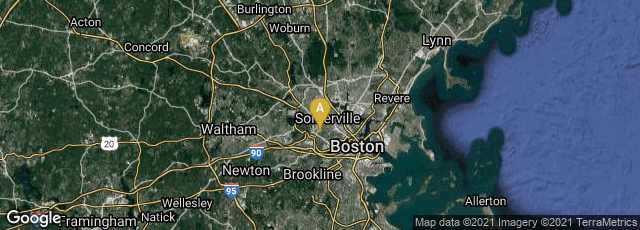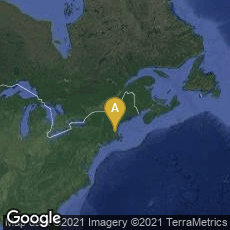

A: Cambridge, Massachusetts, United States
In 1955 William N. Locke of the Department of Modern Languages at MIT, and English electrical engineer, computer scientist and machine translation pioneer Andrew Donald Booth issued Machine Translation of Languages, the first book on machine translation. This was an anthology of essays by fourteen of the earliest pioneers in the field. The foreword to the book was by Warren Weaver, who largely set research on machine translation in motion with his July 1949 memorandum Translation, republished as the first chapter in the volume. The editors began the book with an historical introduction that they wrote jointly, and ended it with an annotated bibliography of 46 references that represented virtually the entire literature on the subject at the time. The history as the authors saw it, began with discussions by Booth and Weaver in 1946 in which Weaver thought that cryptanalysis techniques developed in WWII could be adapted for translation, while Booth thought that, given the extremely limited memory capacity of the earliest machines, some kind of electronic dictionaries could be created.
A review of the book by Martin Joos published in Language in 1956 summarized the primitive state of the art at the time, pointing out that in 1956 human translation remained cheaper and faster— not to say more accurate— than machine translation. I quote its first paragraph:
"M [achine] T[ranslation] is today both a dream and a reality. The dream is that some day electronic computing machines will do our translation for us. The reality is that MT is being done currently, experimentally and with low-grade results and that dozens of earnest workers are also trying, of course, to expand and sharpen their methods. Nowadays it is not usually a computer that performs the MT work it is a person (or crew) duplicating with paper and pencil the very procedures that the computer would use. The procedures are rigidly controlled, and it is known that a computer could be 'programmed' to follow them. But in the experimental and development stage of MT it is not only cheaper to do the work by hand; it is also faster."